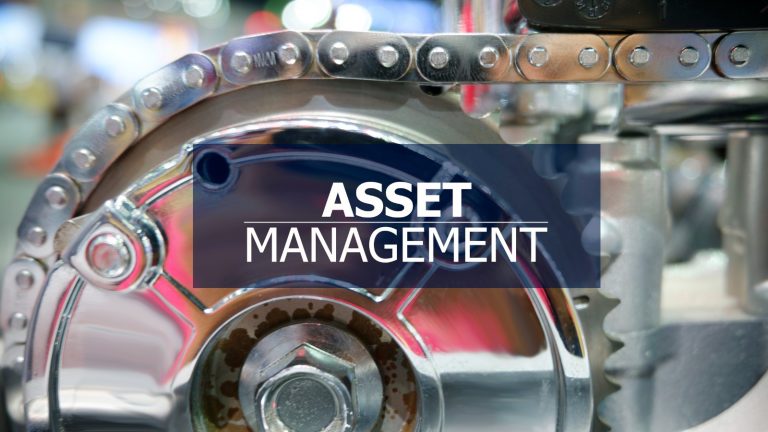There is no enterprise running without assets. In order to function properly, enterprises are required to own assets in one form or another. This can be infrastructure or machinery. Owning suitable assets is not easy, as you are required to align your business needs with the features of the assets. On the other hand, you expect to have a long-lasting impact on these assets since you have invested millions of dollars in them. This is where ‘Asset Lifecycle Management’ comes in as a concept.
In this article, we are going to focus on asset lifecycle management and the key stages of it in order to offer you a good understanding when handling the assets of your enterprise.
We will know
What is Asset Lifecycle Management?

- Asset Lifecycle Management or ALM, in short, is actually a concept that has entered the enterprise asset management scenario in the recent past. This refers to the systematic management of assets from acquisition to disposal. The whole concept is like an entire network, which consists of many aspects such as planning, acquisition, operation, maintenance, and decommissioning.
- The latter has been developed as a separate component of maintenance as it is crucial and impacts the overall functioning of enterprise assets. Maintenance ensures that assets operate efficiently, minimising downtime and lifespan. Yes, the ultimate goal is an extended lifespan.
- What happens when you fail to do so? Failure to maintain assets can lead to decreased productivity and increased repair costs. Not only that, but it will also lead to safety hazards and regulatory non-compliance.
- This is why modern enterprises pay a little more attention to expanding the lifecycle of their assets. Proper ALM includes proactive maintenance strategies, which will ultimately lead to data-driven decision-making. When the ALM is done correctly, compliance with regulations, optimising asset utilisation, and return on investment are all possible conveniently.
- As a part of ALM, it ensures assets are maintained at peak performance throughout their lifecycle. It is also essential to make sure that they are functioning with enhanced operational efficiency, reducing risks, and preserving organisational value as the end result.
Exploring the Key Stages of Asset Lifecycle Management

Planning
Planning is undoubtedly the first stage of asset lifecycle management, and it is initiated when existing assets fail to meet organisational requirements.
It contains a methodical procedure that makes use of data gathered from the asset management system and important stakeholder insights.
First, the need for the asset is thoroughly evaluated. It is also important to consider its current inadequacy and the projected future demands of the organisation. This assessment covers everything under one vision, which includes various factors such as operational efficiency, technological advancements, and regulatory compliance.
The organisation’s strategic goals are then in line with a thorough grasp of its current and future demands. During this stage, particular needs and preferences have to be determined through cooperative interaction with stakeholders, such as department heads, financial teams, and maintenance staff.
Then the analysis occurs, and the responsible parties also begin to investigate resources that are currently accessible and meet the specified requirements, including characteristics like cost-effectiveness, scalability, and dependability.
As you can see, planning is the basis for further proceedings. This stage establishes the foundation for well-informed decision-making, guaranteeing the choice of assets that best fulfil the objectives of the company. No further explanation is required to justify that it improves operational efficiency and maximises return on investment throughout the asset lifespan.
Acquisition
The acquisition stage of asset lifecycle management follows planning and involves extensive budgetary considerations and vendor research to procure the necessary assets.
During this stage, what an enterprise requires is the knowledge they acquired during the first phase, which is planning. Utilising insights garnered from the planning phase, organisations streamline the identification of suppliers capable of meeting requirements within budget constraints.
This phase cannot be limited to one or a few aspects, as it includes activities ranging from vendor negotiations to asset procurement, ensuring alignment with strategic goals and financial objectives.
After the asset is chosen, it is shipped and installed, which involves a number of labour-intensive procedures, including testing, inspection, assembly, setup, and integration with corporate asset management software or computerised maintenance management systems. At the same time, cooperation between maintenance teams and asset makers makes it easier to create necessary records like bills of materials and schedules for preventative maintenance.
The maintenance crew also gets owner’s manuals, arranges maintenance storerooms, and inputs spare parts into systems in order to become ready for asset integration. This plays a huge part in the second stage of ALM. Therefore, technicians will also engage in training sessions provided by manufacturers to acquire proficiency in basic maintenance procedures.
Operation
Here comes the most important part of asset lifecycle management.
The operational stage of asset lifecycle management marks the period of active utilisation and maintenance of acquired assets. It is obvious that this involves the deployment of resources, personnel, and systems to ensure optimal performance and longevity of the asset throughout its lifecycle.
During this phase, assets are integrated into daily operations as the enterprise prepares for the second stage. The latter are monitored and maintained on a regular basis to ensure their continued dependability and efficiency while fulfilling their intended function.
Moreover, the technicians are responsible for ensuring that asset performance is continuously evaluated against established benchmarks. This encourages adjustments to operational parameters and maintenance schedules to optimise efficiency and minimise downtime, which is the whole point of the ALM network.
However, this cannot be done by one person or a single department. It should be a unification of understanding and collaboration. Every department, from operational teams and maintenance personnel to asset manufacturers, must get along for ongoing support, troubleshooting, and facilitating upgrades as necessary.
On the other hand, compliance with regulatory requirements and industry standards should play a key role in this stage.
Maintenance
The maintenance stage of asset lifecycle management is actually a systematic approach to preserving asset functionality and longevity. This is made possible through proactive upkeep and repair activities.
It involves the implementation of preventive, corrective, and predictive maintenance strategies tailored to each asset’s requirements. Preventive maintenance routines are scheduled at regular intervals based on manufacturer recommendations, historical performance data, and operational requirements to address potential issues and ensure optimal asset performance.
Initiated in reaction to detected defects or malfunctions, corrective maintenance interventions utilise diagnostic methods and restoration processes to expeditiously reestablish asset performance. On the other hand, predictive maintenance techniques use advanced analytics, sensor data, and machine learning algorithms to forecast potential failures and schedule maintenance activities preemptively. This will minimise downtime and optimise resource allocation.
Moreover, the maintenance phase floats beyond asset maintenance. It includes aspects like inventory management, spare parts procurement, and vendor coordination to maintain adequate supplies and support efficient repair processes. Continuous improvement initiatives, such as root cause analysis and performance optimisation, drive iterative enhancements to maintenance practices, enhancing asset reliability, availability, and performance throughout their lifecycle.
Decommission or Disposal
At this stage, the asset’s operational lifespan comes to an end during the decommission or disposal stage of asset lifecycle management, which involves methodical procedures for retirement, disposal, or repurposing of the equipment.
This phase begins with a thorough assessment and documentation of the asset’s condition, functionality, and historical performance data to inform decision-making regarding its fate. Reselling, recycling, and ecologically friendly disposal are some of the options available to organisations for disposing of their waste, depending on criteria including economic feasibility, legal constraints, and technical obsolescence.
An enterprise has two options in this phase. Let us explain what those are. If they encounter resellable assets, they can easily go for restoration or reconditioning to optimise value recovery. If the assets are outdated or irreversible, then there would be no other option than disassembling and discarding them to collect recyclable parts and reduce environmental effects.
The most important and attention-requiring part is that this stage needs thorough regulatory compliance, as it is a fact that is combined with the environment. Throughout this phase, adherence to legal and regulatory frameworks that regulate asset disposal, such as data security measures and environmental regulations, remains crucial to ensuring ethical and responsible asset retirement.
This is where organisations are supposed to express accountability, transparency, and regulatory compliance by thoroughly documenting and reporting their disposal actions. This builds stakeholder confidence and promotes corporate responsibility.
On the other hand, when an enterprise expresses its disposal methods and procedures openly, it will positively impact its brand reputation as well.
Paving for Proper Asset Lifecycle Management via Modern Tools

Assets tend to age and are highly prone to failure if they are not properly and systematically maintained. In order to fill the gaps in enterprise asset management, the concept of asset lifecycle management has been developed. This is not as easy as it seems to be. This is why enterprises should get expert help from modern tools and technologies. On the other hand, organisations need to be careful of the software they purchase, as not every tool on the market can offer the maximum benefit. Collaborating with the right software provider will keep all these worries at bay.






